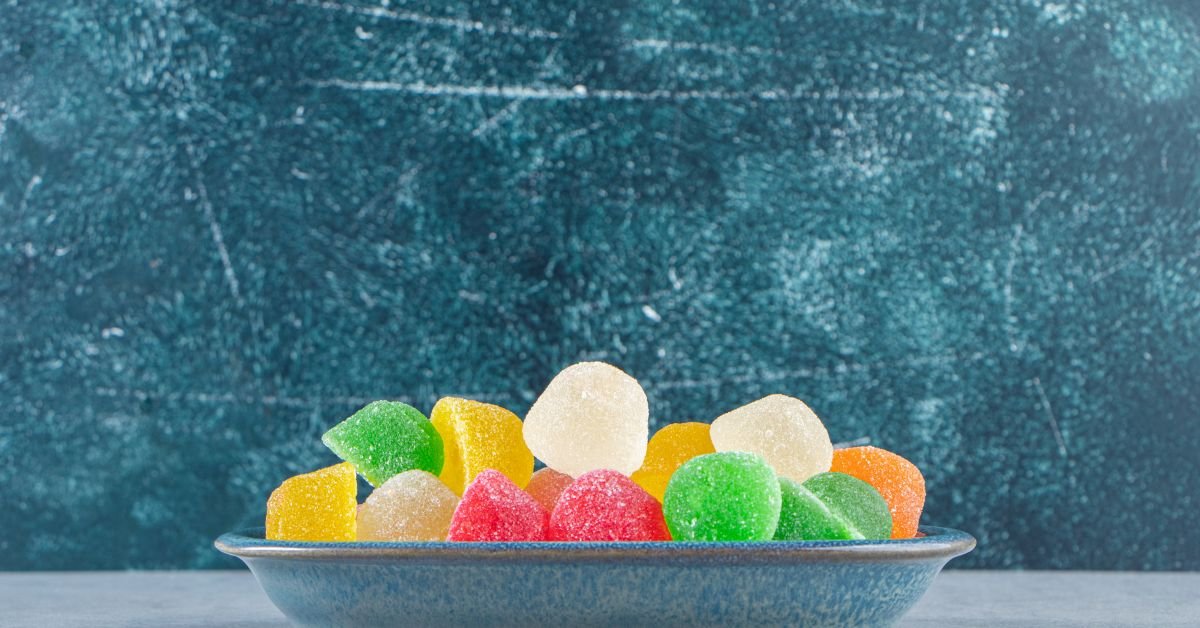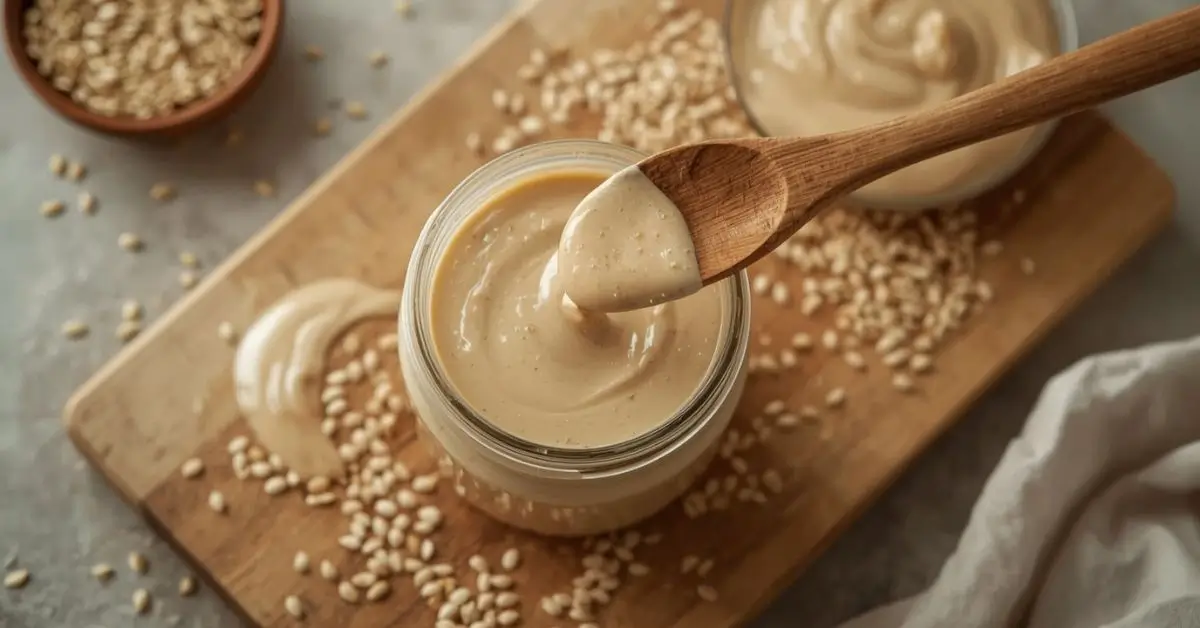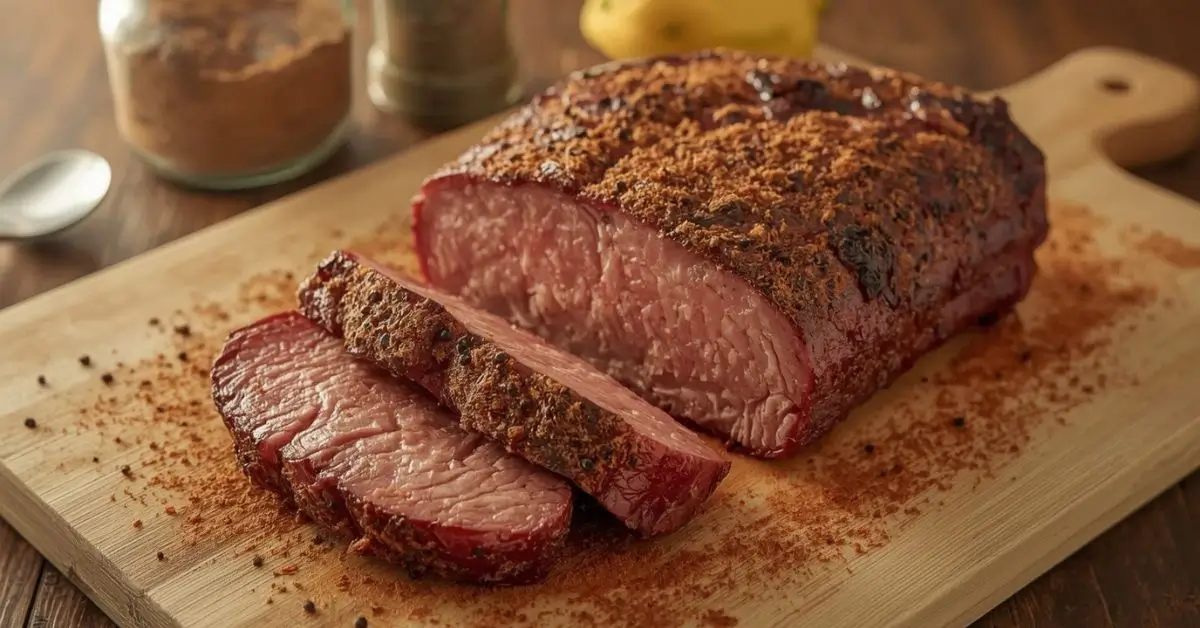FOOD
Jelly Bean Bliss: A Sweet Spin on Classic Jelly

Jelly Bean Bliss A Sweet Spin on Classic Jelly brings together the timeless charm of bean‑shaped candies and the playful nostalgia of fruit‑flavored gelatin treats. In the very first bite, the classic candy shell gives way to a soft, chewy center—delivering sweet bursts of cherry, lemon, or exotic mango in every chew.
The Charming History of the Jelly Bean Candy
The process known as “panning” builds that hard candy shell around a gel interior, creating the signature chew and shine .
One iconic brand, Jelly Belly, introduced gourmet jelly beans in 1976, offering dozens of true‑to‑life flavors like Very Cherry, buttered popcorn, and chili‑mango. Inventor David Klein named the beans after the blues musician Lead Belly—and the company now boasts more than 50 flavors globally
Understanding the Ingredients
The base of the candy consists of sugar, corn syrup, and modified cornstarch (or tapioca starch). These blend into a gel that sets into that familiar chewy interior. Flavorings and food colorings (sometimes natural, like beet juice or turmeric) provide vibrant hues and taste profiles, while a glossy shell of confectioner’s glaze or beeswax seals in flavor and sheen
Jelly Beans and Celebrations: Sweetness for Every Occasion
Jelly beans aren’t just nostalgic treats—they’ve become a staple in celebrations around the world. Whether it’s Easter, Halloween, Christmas, or birthday parties, these colorful candies add charm and cheer to any event.
Flavor Varieties and Sensory Experience
From classic flavors like green apple, grape, lemon, and cherry, to novelty tastes like buttered popcorn, s’mores, or PB&J, jelly bean makers continue to innovate with shiny, flavorful combinations that evolve the chewy candy experience Reddit jelly bean fans frequently single out favorites such as buttered popcorn or black licorice, citing the superior center‑flavored profile and texture of Jelly Belly over basic brands
Sensory appeal comes from the contrast of crunchy shell to chewy core, plus bright colors and intense flavor. The act of slowly dissolving the candy lets sweet notes build gradually in the mouth—an addictive layering of taste.
Vegan and Vegetarian Options: Gelatin Alternatives and Dietary Considerations
Traditional jelly beans may incorporate gelatin derived from pork or beef—rendering them off‑limits for some dietary practices.
For homemade or artisan versions, agar‑agar or pectin offer plant‑based gelling options. Agar agar, derived from seaweed, provides a firm set even at room temperature and body heat, making it ideal for jelly candies. Reddit users note that agar agar often requires much less than gelatin—sometimes just 1/8th the quantity—though the texture may feel different
Jelly Beans in Pop Culture: From TV Shows to TikTok
Jelly beans have also carved a space in pop culture. They’ve appeared in popular TV shows like Friends and The Office, often as part of light-hearted snacking scenes. In the Harry Potter universe, “Bertie Bott’s Every Flavour Beans” introduced fans to magical (and sometimes gross) versions of the treat. This trend has turned jelly beans into not just a candy, but an interactive experience shared across social media.
The Making Process: From Mixing to Drying
Candy makers begin with a heated mixture of sugar, syrup, and starch until the desired viscosity is reached. At this point, natural or artificial flavor extracts and colorings are added. The mixture is deposited into bean‑shaped molds or dripped onto trays and then allowed to set and cool.
The drying phase, often lasting 7 to 14 days for commercial products like Jelly Belly, helps develop a crisp outer shell and deep hue—some factory processes yield “Belly Flops,” imperfect beans that are still edible but vary in shape and color
Texture, Storage, and Freshness: Maintaining the Perfect Bite
Chewy candy like jelly beans thrives when stored properly. Ideally, they stay in an airtight container, kept in a cool, dry place, away from direct sunlight or humidity that can cause stickiness or grainy sugar crystallization
Unopened jelly beans often keep for 10–12 months; once opened, they’re best eaten within 3–6 months. To soften stale beans, placing a slice of bread in a sealed container can help restore chewiness
Innovative Ways to Enjoy Jelly Beans
These creative ideas transform classic candy into festive delights Jelly beans can also decorate cakes, cookies, and cupcakes—used sparingly after baking to preserve shape and flavor.
Frequently Asked Questions (FAQs)
Q: Are all jelly beans made with gelatin?
A: No—many mainstream brands like Jelly Belly use sugar, corn syrup, and modified starch instead, making them vegetarian-friendly.
Q: Can jelly beans be vegan?
A: Some homemade or specialty vegan versions use agar‑agar or pectin as gelling agents. Most commercial jelly beans are vegetarian but not vegan due to beeswax or shellac coatings .
Q: How long does it take to make jelly beans?
A: Commercial production can take 7–14 days due to shell drying; home recipes usually take about 24 hours to set, with optional additional drying and dusting steps</span> .
Q: What flavors are the most popular?
A: Classics like cherry, lemon, grape, and green apple remain favorites. Novelty choices—such as buttered popcorn, cinnamon, s’mores, or PB&J recipe mixes—are popular among adventurous fans
Q: How should jelly beans be stored?
A: Keep them sealed in an airtight container at room temperature in a cool, dry place. Avoid humidity, direct sunlight, and refrigerating them, which may cause condensation
Conclusion
From its Civil War origins to modern artisanal realism, Jelly Bean Bliss: A Sweet Spin on Classic Jelly encapsulates the allure of colorful, flavorful candies. jelly beans remain a beloved sweet treat. With awareness of ingredients, dietary considerations, and proper storage you can savor each bean in all its vibrant, flavorful chewing bliss.
FOOD
Is Certo Vegan for Cooking and Canning? Explained

Health awareness has never been higher. With food companies becoming more open about their ingredients—and consumers becoming more informed—people want clarity. Certo isn’t just used in jelly recipes anymore. People use it for:
- Home canning
- Vegan cooking
- Gluten-free baking
- DIY detox mixes
- Smoothies
- Gel replacements
So it’s natural to question whether Certo natural ingredients are truly vegan, especially when some thickeners contain animal derivatives like gelatin, isinglass, or enzymes sourced from animals.
The tricky part? Certo doesn’t display an official Certo vegan certification, leaving users unsure. That’s why this guide exists—to break down every detail so you can make confident, informed decisions.
What Exactly Is Certo? A Quick Overview
Certo is Kraft Heinz’s brand of liquid and powdered fruit pectin. It’s widely used to:
- Thicken fruit jams
- Enhance textures
- Stabilize homemade jellies
- Improve consistency in vegan recipes
Its function comes from pectin, a naturally occurring fiber found in fruits—especially apples, citrus peels, and berries.
But here’s the catch:
Just because pectin comes from fruit doesn’t automatically guarantee it’s processed vegan-friendly. Additives, clarifying agents, and manufacturing practices can change everything.
Understanding Certo Fruit Pectin Ingredients (What’s Actually Inside)
Let’s break down what’s commonly found in Certo’s liquid and powdered formulations. While formulations can shift by region, the base ingredients remain similar.
Liquid Certo usually includes:
- Water
- Fruit-derived pectin
- Lactic acid
- Sodium citrate
- Preservatives (like benzoates in some versions)
Powdered Certo includes:
- Fruit pectin
- Dextrose
- Citric acid
- Potassium citrate
Important note:
None of these ingredients are inherently animal-derived. However, the uncertainty comes from processing—like how the pectin is extracted, clarified, and filtered.
For example:
- Some manufacturing processes use animal enzymes for purification.
- Some citric acids may be processed using substrates derived from animals.
- Preservatives can vary by region.
This is why shoppers want clarity about Certo dietary restrictions and vegan labeling.
Is Pectin Plant Based? (Yes—But the Process Can Complicate Things)
At its core, pectin is 100% plant-based. It’s extracted from:
- Citrus peels
- Apples
- Fruit pulp
- Berries
If the world stopped here, the question “Is Certo vegan?” would be incredibly easy.
But manufacturers sometimes use:
- Animal-based enzymes
- Gelatin filters
- Non-vegan clarifying agents
This is extremely rare—but not impossible. Cheap brands have historically used these methods. And since Certo isn’t transparent about its exact production methods, people understandably have doubts.
However, most modern manufacturers—including those producing Certo—typically rely on plant-derived stabilization, filtration, and extraction, especially in 2025.
Does Certo Have Vegan Certification? (Here’s the Truth)
There is currently no official Certo vegan certification on its packaging.
This does not mean Certo isn’t vegan.
It simply means the brand hasn’t pursued certification from:
- The Vegan Society
- Vegan Action
- Plant-Based Certification Program
Many mainstream brands skip certification due to cost, legal limitations, or branding choices.
But lack of certification is the main reason people ask “is Certo vegan?” so frequently.
So… Is Certo Vegan? The Most Accurate Answer for 2025
Based on ingredient analysis, manufacturing standards, and the absence of any known animal by-products, Certo is widely accepted as vegan-friendly.
Here’s why:
- Pectin is plant-derived.
- Citric acid and lactic acid used in Certo are typically microbial or plant-sourced today.
- No gelatin, collagen, isinglass, or animal enzymes are listed.
- Kraft Heinz does not indicate any animal sourcing.
But because Certo lacks formal vegan certification, extremely strict vegans may still prefer brands that display explicit logos.
For 99% of plant-based consumers, Certo is considered safe, vegan, and animal-free.
Certo vs. Sure-Jell Vegan Comparison
A common comparison people make is Certo vs Sure-Jell vegan suitability.
Here’s the simplified breakdown:
Certo
- Liquid or powder
- No animal ingredients
- No official vegan label
- Widely considered vegan-friendly
Sure-Jell
- Another Kraft Heinz pectin product
- Mostly identical ingredient list
- Also not officially certified
- Considered vegan-friendly as well
So in terms of fruit pectin vegan or not, both brands fall into the same category:
Vegan by ingredients, not by certification.
Are There Any Certo Dietary Restrictions to Worry About?
Certo is free from:
- Meat
- Dairy
- Eggs
- Gelatin
- Gluten (usually)
- Soy (in most markets)
This makes it suitable for:
- Vegans
- Vegetarians
- Halal users
- Kosher users
- Gluten-free diets
- Whole-food plant-based cooks
However, ingredients can vary slightly by country. Anyone with severe allergies should check their local label.
Exploring Vegan Friendly Food Thickeners (Alternatives to Certo)
If you’re still unsure or prefer brands with explicit certification, here are top animal-free pectin brands.
Pomona’s Universal Pectin (Certified Vegan)
- Made from citrus peels
- No preservatives
- Uses calcium water activation
Jell-Ease Vegan Pectin
- Plant-derived
- No additives
- Good for low-sugar recipes
Modernist Pantry Fruit Pectin
- Professional-grade
- Fully plant-based
These plant-derived pectin alternatives offer transparency for strict vegan consumers.
Is Fruit Pectin Vegan or Not Across All Brands?
Most fruit pectin globally is vegan, but you must watch for:
Potential non-vegan additives
- Gelatin
- Shellac
- Isinglass
- Enzymes derived from animals
Potentially problematic processing
- Animal-based clarification
- Bone char filtration (rare but possible in some sugar blends used with pectin)
Certo does not use animal-based clarification, based on available ingredient analysis.
Real-Life Example: A User’s Experience with Certo
A user once said in a social post:
“I started making vegan strawberry jam this year, and Certo worked perfectly. I researched every ingredient because I’m super strict about what I buy, and everything checked out.”
This reflects most people’s experiences with Certo. While it lacks formal vegan certification, the ingredients align with vegan expectations.
Pectin Nutrition Facts for Vegans
Pectin offers several nutritional perks:
Rich in Fiber
Pectin is a soluble fiber that helps digestion and gut health.
Zero Fat, Zero Cholesterol
Perfect for plant-based diets.
Helps Stabilize Blood Sugar
Fiber helps regulate absorption.
Supports Heart Health
Pectin may reduce LDL cholesterol levels.
These nutritional benefits make pectin a smart choice for vegan cooking.
Certo Natural Ingredients: How “Clean” Is It?
Certo’s ingredient list is short and minimal—no artificial flavors, colors, or fillers. This simplicity aligns with clean eating trends in 2025.
Most consumers appreciate that the product doesn’t hide behind complex names or vague labeling. Everything used in Certo has a purpose:
- Citric acid → controls acidity
- Sodium citrate → stabilizes pH
- Lactic acid → enhances gelling properties
- Pectin → natural thickener
All of these are compatible with vegan diets.
Vegan Gelatin Substitutes to Use With or Without Certo
If you’re using Certo in recipes that normally require gelatin, here are plant-based replacements:
Agar Agar
Made from seaweed. Works great for firm gels.
Carrageenan
Another seaweed-based thickener used in many vegan products.
Xanthan Gum
Plant-based microbial fermentation product.
Guar Gum
Comes from guar beans—great for smoothies.
Chia Seeds or Flax Seeds
Perfect for whole-food plant-based cooks.
These pair extremely well with Certo in certain recipes.
How Certo Is Used in Vegan Cooking (Not Just for Jams!)
You can use Certo for:
- Vegan cheesecakes
- Smoothie bowls
- Plant-based yogurt thickening
- Homemade gummies (without gelatin)
- Fruit sauces
- Vegan Jell-O alternatives
- Low-sugar jams
- Raw vegan desserts
This flexibility is why Certo continues to be a staple in 2025.
Is Certo Suitable for Vegan Detox Drinks?
Many detox enthusiasts use Certo mixed with fruit juice. Because Certo contains only fruit pectin and simple acids, it aligns fully with vegan detox guidelines.
But remember:
- It’s not a medical treatment
- It’s not a detoxifying agent on its own
- It’s not scientifically proven for “cleansing”
Use responsibly and consult a health professional if you rely on detox routines.
FAQ’s
No. Based on ingredient analysis, Certo does not contain animal by-products. It uses fruit pectin, plant-derived acids, and mineral salts, which align with vegan dietary expectations. However, it lacks official vegan certification.
Both versions are considered vegan-friendly because they rely on the same fruit-derived pectin. Some users prefer powdered Certo because it has fewer preservatives, but neither contains animal-based ingredients.
If you want a certified option, choose Pomona’s Universal Pectin or Modernist Pantry’s plant-derived varieties. These brands explicitly advertise vegan compliance and offer cleaner ingredient lists.
Yes. Certo does not contain gluten, dairy, eggs, or animal products. It’s safe for vegans, vegetarians, and most allergy-sensitive diets. Always check your local label for variations.
Final Thoughts
So—is Certo vegan?
For most people following a vegan lifestyle, the answer is yes. Certo uses fruit-based pectin, simple plant-compatible acids, and no known animal derivatives. While it doesn’t hold an official vegan certification, its ingredients align closely with vegan standards.
FOOD
Top 7 Health Benefits of Tahhiini You Should Know

Tahhiini, often spelled tahina or tahini, is a sesame paste made by grinding roasted or raw sesame seeds into a smooth, oily butter. Think of it as the sesame equivalent of peanut butter — only creamier, more delicate, and packed with a distinct earthy flavor.
Tahhiini has been a staple ingredient across the Middle East for thousands of years, used in dishes like hummus, baba ghanoush, halva, and even sweet pastries. Today, it’s celebrated worldwide as a superfood for its rich nutrient profile, versatility, and clean plant-based origin.
The Ancient Story of Tahhiini
The origins of tahhiini go back over 4,000 years to the ancient Middle East, where sesame seeds were prized for their oil and medicinal properties. Records from Mesopotamia and Persia mention tahina as a food of the elite — both for nourishment and luxury.
Fast forward to the 21st century, and tahhiini has evolved into a global pantry essential. From health-conscious millennials to Michelin-star chefs, everyone’s finding a place for this humble sesame paste.
Types of Tahhiini: Choosing the Right One
Not all tahhiini is created equal. The flavor, color, and texture depend on the kind of sesame seeds used and how they’re processed. Let’s break down the main varieties:
Hulled Tahini
This version is made from sesame seeds with their outer shells removed. The result? A smoother, lighter-colored tahini with a mild flavor and silky consistency. It’s ideal for tahini sauce, tahini dressing, and desserts.
Unhulled Tahini
Unhulled tahhiini keeps the seed’s outer shell intact, giving it a deeper color, thicker texture, and more robust taste. It’s richer in calcium and fiber but can taste slightly bitter. If you’re into nutrient density, this one’s for you.
Roasted Tahini
Roasted tahhiini uses sesame seeds that have been lightly toasted before grinding. This enhances its nutty aroma and creates a warm, deep flavor that’s perfect for savory dishes or tahini dip.
Raw Tahini
Raw tahhiini is made from unroasted seeds, preserving its delicate and slightly bitter taste. It’s great for smoothies, salad dressings, or as a base for healthy desserts where subtlety matters.
Tahhiini vs. Sesame Seed Butter
While they sound similar, tahhiini and sesame seed butter have slight differences. Sesame butter is often thicker, made with roasted seeds, and sometimes sweetened. Tahhiini, on the other hand, stays pure — just ground sesame seeds and nothing else.
This purity makes it ideal for both savory and sweet recipes, from creamy tahini sauce to sweet tahini cookies or even tahini halva.
Delicious Ways to Use Tahhiini
Tahhiini’s charm lies in its adaptability. It blends beautifully with both salty and sweet ingredients. Here are some popular ways to incorporate it into your cooking:
Tahini for Hummus
Every good hummus recipe starts with high-quality tahhiini. Its creamy texture adds richness, while its earthy tones balance the bright acidity of lemon and the sharpness of garlic.
Tahini Dressing for Salads
Mix tahhiini with lemon juice, garlic, olive oil, and water for an easy, zesty tahini dressing. It’s vegan, gluten-free, and adds instant sophistication to any salad.
Tahini Dip for Snacks
Pair tahini dip with pita bread, falafel, or roasted veggies. Add a pinch of cumin or paprika for a Middle Eastern flair.
Tahini and Lemon Sauce for Grilled Dishes
This duo is a match made in heaven. Tahini and lemon sauce works wonders over roasted vegetables, grilled fish, or even as a sandwich spread.
Tahini Halva and Tahini Cookies
Sweet lovers, rejoice! Tahini halva is a melt-in-the-mouth sesame dessert, while tahini cookies bring a nutty twist to traditional baking. Their balance of sweetness and depth makes them unforgettable.
Health Benefits of Tahhiini
Tahhiini isn’t just delicious — it’s also a nutritional powerhouse. Packed with healthy fats, plant-based protein, and essential minerals, it’s earned its superfood reputation for good reason.
Heart Health Support
Tahhiini is rich in monounsaturated and polyunsaturated fats, which can help lower bad cholesterol and reduce the risk of heart disease.
High in Calcium and Iron
Especially in unhulled tahini, calcium levels are impressive. One tablespoon can contain up to 10% of your daily calcium needs — a huge plus for vegans.
Protein for Vegans and Vegetarians
A serving of tahhiini offers around 5 grams of protein, making it an excellent source of plant-based energy.
Antioxidant Power
Sesame seeds are loaded with lignans and vitamin E, known for their antioxidant and anti-inflammatory effects.
Gut Health and Fiber
Unhulled tahhiini provides extra fiber, aiding digestion and maintaining a healthy gut microbiome.
Expert Tips: How to Use Tahhiini Like a Chef
- Warm before using: Tahhiini can separate or harden at the bottom of the jar. Stir well or warm slightly for a smooth consistency.
- Balance flavors: Tahhiini pairs beautifully with acid (like lemon or vinegar), salt, and sweetness.
- Experiment globally: Use tahhiini in Asian noodle sauces, smoothie bowls, or even chocolate spreads.
- Store smart: Keep it in a cool, dark place. Refrigeration can make it too thick, but room temperature keeps it perfect for drizzling.
A Real-Life Tahhiini Moment
A food blogger once tweeted, “I replaced peanut butter with tahhiini in my morning toast — and now I can’t go back. It’s creamy, savory, and somehow feels healthier.” That single post sparked thousands of comments, proving how tahhiini has quietly become the new breakfast trend.
Pros and Cons of Tahhiini
| Pros | Cons |
|---|---|
| Rich in nutrients and healthy fats | Can taste bitter if unhulled |
| Vegan and gluten-free | Some brands separate quickly |
| Versatile for sweet and savory dishes | High in calories if overused |
| Long shelf life | May cause allergies for some people |
| Supports heart and bone health | Needs stirring before use |
Modern Uses of Tahhiini in 2025
The year 2025 has brought a new wave of tahhiini creativity. Vegan bakeries now use tahini spread as a base for frostings and fillings. Fitness influencers blend raw tahini into protein smoothies. Even baristas are experimenting with tahini coffee — yes, you read that right.
In the wellness community, tahhiini has become a top ingredient for those following Mediterranean, ketogenic, or anti-inflammatory diets. It’s also a go-to for those avoiding nut butters due to allergies.
Common Myths About Tahhiini
- Myth: Tahhiini is high in fat and unhealthy.
Fact: The fats in tahhiini are heart-healthy, similar to those in olive oil and avocado. - Myth: Tahhiini is only for hummus.
Fact: You can use tahhiini in desserts, sauces, smoothies, and even pancakes. - Myth: Tahhiini spoils quickly.
Fact: It actually has a long shelf life when stored properly — up to 6 months after opening.
How to Choose the Best Tahhiini Brand
When shopping for tahhiini in 2025, look for:
- Ingredients: 100% sesame seeds (no additives or oils).
- Texture: Smooth, not gritty or too thick.
- Color: Light beige for hulled, darker brown for unhulled.
- Origin: Lebanese, Israeli, Greek, and Turkish brands are often top-quality.
FAQ Section
Tahhiini is made by grinding roasted or raw sesame seeds into a smooth, creamy paste. It’s essentially pure sesame paste, sometimes called tahina.
Unlike peanut butter, tahhiini has no added sugar or salt (unless specified). It’s more earthy, thinner, and pairs well with both sweet and savory foods.
Yes! Toast sesame seeds, let them cool, then blend them with a drizzle of neutral oil until smooth. Homemade tahini spread can last 2–3 months in a sealed jar.
Natural oils rise to the top because tahhiini doesn’t contain stabilizers. Stir it well before each use — or store upside down for even consistency.
Final Thoughts
From its humble beginnings as an ancient sesame paste to becoming a modern health icon, tahhiini has earned its place in the global kitchen. Whether you’re using it as tahini dressing for your salads, swirling it into tahini halva, or baking tahini cookies, this silky superfood proves that simple ingredients often make the biggest impact.
FOOD
How to Find the Brisket Rub Best for Your BBQ

Before diving into recipes, it’s essential to understand what separates a mediocre rub from the brisket rub best. A top-notch rub balances flavor, enhances the natural taste of beef, and complements slow-cooking or smoking methods. Here are key factors to consider:
- Flavor Profile: The best brisket rubs blend salt, sugar, and spices to create a perfect balance of savory, sweet, and smoky notes.
- Texture: A good rub should create a crust or bark that locks in moisture without overpowering the meat.
- Versatility: Look for rubs that work for smoking, grilling, or oven-baking.
- Ease of Use: Whether homemade or store-bought, the rub should be easy to apply and consistent in flavor.
As pitmaster Jake R. tweeted last summer:
“Finally nailed the brisket bark with this homemade rub. Friends called it the best they’ve ever had. Game changer!”
Best Brisket Seasoning: Ingredients You Need
When creating the best brisket seasoning, certain ingredients are essential. These spices not only add flavor but also enhance the Maillard reaction, helping form that signature crust. Common ingredients include:
- Kosher salt: Enhances flavor and tenderizes meat.
- Black pepper: Classic, bold, and a must for Texas-style rubs.
- Paprika: Adds subtle smokiness and vibrant color.
- Brown sugar: Balances spices with sweetness and aids caramelization.
- Garlic and onion powder: Essential aromatics that deepen flavor.
- Cayenne or chili powder: Adds heat if desired.
BBQ Rub for Brisket: Store-Bought vs Homemade
Store-Bought Options
If you’re pressed for time, there are excellent BBQ rubs for brisket on the market. Look for blends that highlight natural ingredients without artificial flavors. Popular brands often focus on regional styles, like Texas or Kansas City rubs.
Pros:
- Convenient
- Consistent flavor
- Widely available
Cons:
- Limited customization
- Can be more expensive per ounce
Homemade Brisket Rub
Nothing beats a homemade brisket rub for control and flavor experimentation. You can tweak sweetness, heat, and herbiness to match your taste.
Simple Recipe:
- 1/4 cup kosher salt
- 1/4 cup black pepper
- 2 tbsp smoked paprika
- 1 tbsp garlic powder
- 1 tbsp onion powder
- 2 tsp cayenne (optional)
- 2 tbsp brown sugar
Mix thoroughly and apply generously to your brisket 12–24 hours before cooking.
Smoked Brisket Spices: How to Layer Flavors
Smoking brisket is both an art and a science. The right smoked brisket spices can elevate the flavor from ordinary to legendary. Consider layering your rub with additional ingredients:
- Liquid smoke or smoked paprika for deeper smokiness.
- Coffee grounds or cocoa powder to enhance bark complexity.
- Herbs like thyme or rosemary for aromatic undertones.
The trick is to build flavor without masking the natural beef taste. Start with a base rub, then adjust depending on your cooking method and personal preference.
Texas-Style Brisket Rub: A Regional Favorite
When people think of the Texas-style brisket rub, they imagine simplicity and bold flavors. Traditionally, this rub is:
- Salt and black pepper heavy
- Minimal sugar
- No complex spices
- Focused on highlighting the beef’s natural flavor
Applying a Texas-style rub generously and letting it rest overnight before smoking produces the iconic bark and juicy interior Texas BBQ enthusiasts crave.
Dry Rub for Brisket: Technique Matters
Applying a dry rub for brisket isn’t just sprinkling spices. Here’s how to do it like a pro:
- Pat the brisket dry with paper towels. Moisture prevents the rub from sticking.
- Coat generously on all sides, pressing the rub into the meat.
- Wrap or rest for several hours or overnight in the fridge to allow flavor penetration.
- Cook low and slow to ensure the rub forms a perfect crust.
Pro tip: Don’t rush the resting period after cooking either—let it rest wrapped in foil for at least 30 minutes to retain juices.
Brisket Spice Mix: Advanced Variations
Once you’re comfortable with basic rubs, experiment with a brisket spice mix that reflects your style. Some advanced variations include:
- Sweet and smoky: Brown sugar + smoked paprika + chipotle powder
- Spicy and savory: Cayenne + black pepper + garlic powder + onion powder
- Herbal touch: Thyme, rosemary, and oregano with paprika and salt
Mix small batches, taste-test, and tweak ratios until it’s perfect for your palate.
Meat Rub Recipes: Pairing with Sides
A great meat rub recipe is only part of the BBQ experience. Consider pairing your brisket with sides that complement the rub:
- Creamy coleslaw to balance smoky heat
- Pickled vegetables to cut richness
- Cornbread or baked beans to enhance sweet notes
This way, the brisket rub doesn’t just season the meat—it sets the tone for the entire meal.
BBQ Seasoning Mix: Storage Tips
Whether homemade or store-bought, your BBQ seasoning mix deserves proper storage:
- Keep in airtight jars
- Store away from light and heat
- Label with date and ingredients
- Shake or mix before each use to redistribute oils and spices
Proper storage ensures your brisket rub maintains potency and flavor longevity.
Slow-Cooked Brisket Rub: Maximizing Flavor
For slow-cooked brisket rub, patience is key. Applying rubs and letting flavors meld over long cooking periods brings out deep, smoky, and savory notes. Tips for slow-cooked success:
- Rub generously before cooking
- Smoke or bake at low temperatures (225–250°F) for several hours
- Wrap in butcher paper or foil during the final phase for tender meat
- Slice against the grain to preserve tenderness
Slow-cooked brisket allows the rub to penetrate deeply, enhancing every bite.
Real-Life Example
Jamie L., a BBQ enthusiast from Austin, shared on a forum:
“I’ve tried dozens of brisket rubs, but the one I made with smoked paprika, brown sugar, and a hint of coffee grounds gave me the perfect bark. Family BBQ night is never the same!”
This example highlights the impact of customizing your rub for maximum flavor.
FAQ’s
The best rub for smoked brisket balances salt, sugar, and spices, and complements slow-cooking or smoking methods. Texas-style rubs focus on simplicity, while homemade rubs allow experimentation with sweet, smoky, or spicy profiles.
Combine kosher salt, black pepper, smoked paprika, garlic powder, onion powder, brown sugar, and optional cayenne. Adjust ratios to your taste and let it rest on the meat 12–24 hours before cooking.
Yes! A dry rub for brisket is ideal for flavor without excess moisture. Press the rub into the meat, let it rest, and cook low and slow for the best results.
Applying too little rub
Skipping the resting period before cooking
Overcomplicating the mix with too many flavors
Not storing the rub properly, leading to stale or weak seasoning
Conclusion
Choosing the brisket rub best can feel overwhelming, but understanding ingredients, technique, and regional variations makes it easier. Whether you prefer a classic Texas-style rub or a customized homemade blend, the key is balancing flavors, patience during cooking, and experimentation.
-

 BLOG4 months ago
BLOG4 months agoShocking Gasp GIFs – Top 9 Picks
-

 BLOG2 months ago
BLOG2 months agoIs Recurbate Safe for Users or a Hidden Risk?
-

 TECH5 months ago
TECH5 months agoQuick Guide: How to Easily Reset Your Acer Laptop
-

 BLOG5 months ago
BLOG5 months agoUnmasking the Risks: AI Face Swap in NSFW Content
-

 ENTERTAINMENT5 months ago
ENTERTAINMENT5 months agoTwitter Rate Limit Exceeded: What It Means and How to Fix It Fast
-

 BUSINESS5 months ago
BUSINESS5 months agoBudget Connect: The Smartest Business Phone Service for Less
-

 BLOG5 months ago
BLOG5 months agoMark Spaeny: Tailoring Success and Raising a Star
-

 BLOG5 months ago
BLOG5 months agoHidden Gems: The Rarest Basketball Cards Ever Found


